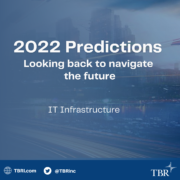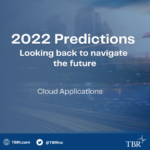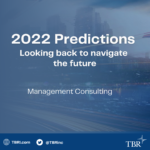IT infrastructure vendors balance demand hurdles and portfolio strategy in 2022
While 2022 has required IT infrastructure vendors to focus on demand hurdles, including supply chain challenges and growing backlogs, vendors have also continued to invest in expanding their portfolios to capture greater wallet share from customers and create more diversified revenue streams.
Vendors’ portfolio strategies largely center on finding new ways to entrench themselves more deeply into customers’ IT ecosystems, helping to maintain hardware share while also opening up software and services revenue opportunities. During 2022 we have seen the honing of hardware subscription offerings, expansion of ecosystem relationships, and a race to develop competencies in edge compute use cases, all of which data center vendors hope will keep demand steady with market uncertainty looming in 2023.
Prediction No. 1: Infrastructure vendors’ ‘as a Service’ offerings will gain traction as the offerings are refined for specific use cases
Principal Analyst Angela Lambert: Half of this prediction has come true. Without question, IT infrastructure vendors are seeing a boom in the adoption of “as a Service” offerings, with high growth rates across new customer acquisitions and annual recurring revenue being reported by the likes of HPE GreenLake, Dell Technologies APEX and Lenovo TruScale. While most vendors entered the subscription services space via Storage as a Service, in 2022 we have seen additional tailoring of portfolios to better align with overarching vendor strategies. Examples include:
- HPE GreenLake released a series of Network as a Service capabilities, officially integrating its high-growth Aruba Networks portfolio into the GreenLake ecosystem.
- NetApp Keystone was first to market with a hybrid cloud offering that allows customers to reallocate spend between on-premises infrastructure and NetApp public cloud services as resource needs change over time, which aligns to the company’s objective to drive growth through cloud software.
- Pure Storage reorganized its subscription business, renaming Pure as-a-Service to Evergreen//One to better integrate with the company’s other support and maintenance subscription offerings under the Evergreen brand.
On the other hand, while IT infrastructure vendors’ subscription services continue to be refined toward standardized offerings for specific use cases, TBR’s research shows the market is challenged by vendors’ desires to go to market with standard packages that are easier to sell and customers’ desires to customize the packages for their specific needs.
This has led to a high proportion of Hardware as a Service deals being scoped and sold on a custom basis instead of a more transactional model akin to Infrastructure as a Service. Successful vendors will meet customers in the middle by building standard services categories that contain modular services components, which can be easily added or removed in the sales process. After all, the ability to customize and control remains a key value proposition of on-premises infrastructure relative to public cloud.
Prediction No. 2: Hardware vendors embrace the ecosystem
Angela: Go-to-market strategies focused on promoting end-to-end solutions and software-centric capabilities over messaging about hardware features is a persisting trend, with the current spin highly centered on hybrid and multicloud themes. This requires a highly partner-centric strategy, and IT infrastructure vendors have continued to announce enhanced partnerships with the likes of VMware and Red Hat as well as deepening relationships with Microsoft Azure and Amazon Web Services (AWS).
One emerging trend among IT infrastructure vendors not mentioned in our 2022 predictions is embracing a broader ecosystem of customers to increase their relevance and influence in previously untouched IT groups, particularly developers within customer organizations who ultimately influence decisions on where applications are hosted and how they are built. From an execution standpoint, IT infrastructure vendors are focused on automating aspects of spinning up new projects via on-premises infrastructure, supporting a range of container-based technologies and building developer communities within their own ecosystems.
Prediction No. 3: Vendors will carve out niche specialties under the broad banner of edge compute
Angela: IT infrastructure vendors have indeed focused on targeting specific edge compute use cases in 2022, although most appear to be targeting the same verticals, which may call into question the ability to develop niche capability from a hardware-centric solutions perspective. Retail and manufacturing emerged in 2022 as the most popular verticals for developing edge compute solutions, with healthcare a distant third.
After being plagued by labor shortages for the past two years, the retail industry has accelerated its investments in edge compute to help transform the brick-and-mortar experience. Vendors are supporting retail transformations by a range of retailers, from big-box retailers to quick-service restaurants and convenience stores. Edge compute solutions can help employees work smarter by automating the ordering and checkout processes, assisting customers with finding inventory and enhancing in-store app experiences. Beyond the in-store experience, data collected through edge deployments is also used to refine merchandising strategy and redesign store layouts to optimize customer experience.
The manufacturing industry is also a top target for building edge compute solutions based on market size, a high rate of adoption of operational technologies, and a strong connection between manufacturing edge solutions and increased customer ROI. Safety, quality control and preventive maintenance are use cases commonly addressed by vendors, many of which rely on computer vision and the ability to analyze real-time data streams.
Ultimately, adoption of modern edge compute use cases is still on the horizon for many businesses, with TBR’s Infrastructure Strategy Customer Research indicating that only about one-quarter of businesses are investing in edge today, and nearly 40% are evaluating future edge investments, signaling growth opportunity for years to come.
Predictions is an annual TBR series examining market trends and business changes in key markets. 2022 covered segments included cloud, telecom, devices, data center, and services & digital.

 Technology Business Research, Inc.
Technology Business Research, Inc. Technology Business Research, Inc.
Technology Business Research, Inc. Technology Business Research, Inc.
Technology Business Research, Inc.